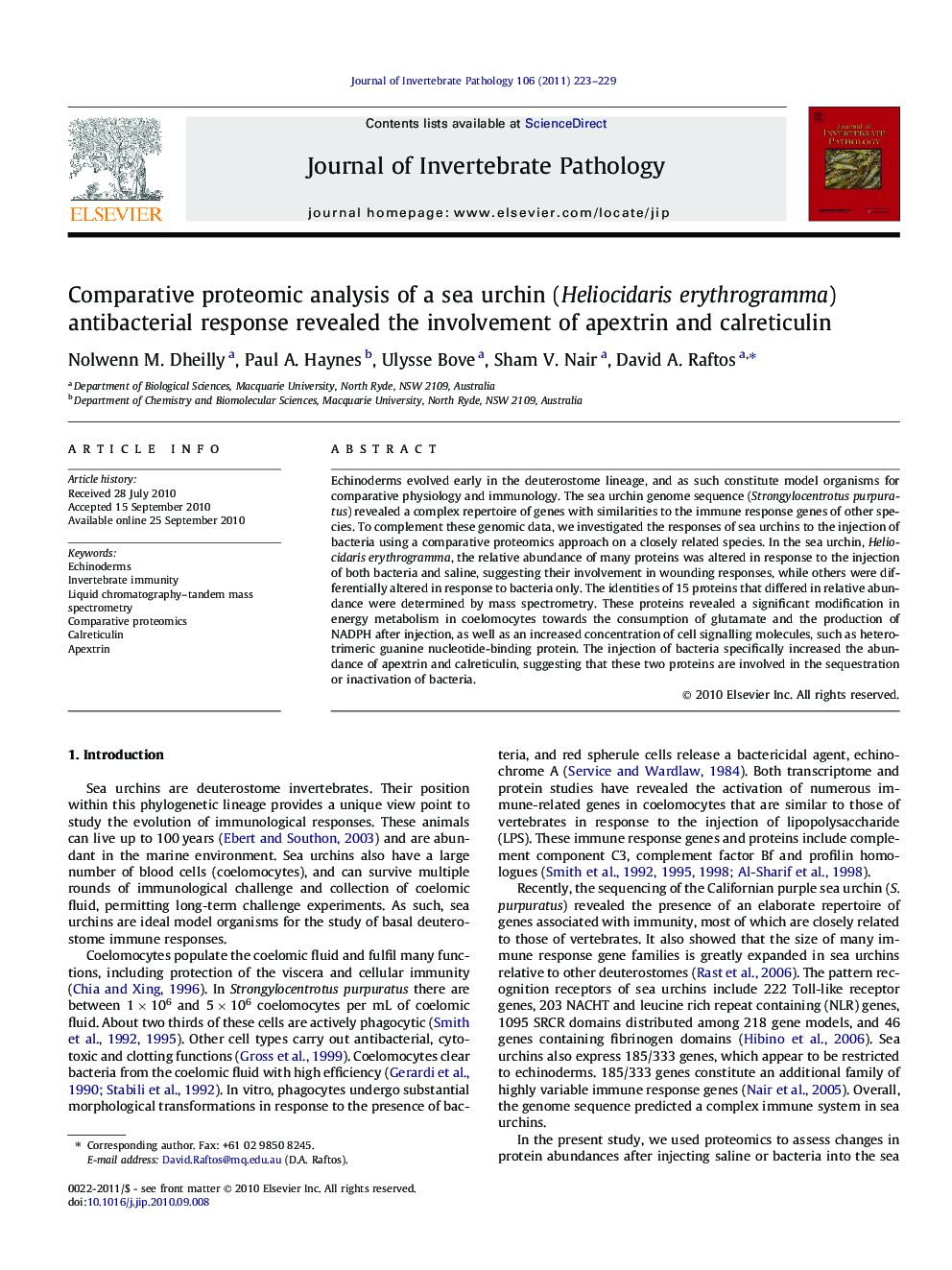| کد مقاله | کد نشریه | سال انتشار | مقاله انگلیسی | نسخه تمام متن |
|---|---|---|---|---|
| 4558087 | 1329921 | 2011 | 7 صفحه PDF | دانلود رایگان |

Echinoderms evolved early in the deuterostome lineage, and as such constitute model organisms for comparative physiology and immunology. The sea urchin genome sequence (Strongylocentrotus purpuratus) revealed a complex repertoire of genes with similarities to the immune response genes of other species. To complement these genomic data, we investigated the responses of sea urchins to the injection of bacteria using a comparative proteomics approach on a closely related species. In the sea urchin, Heliocidaris erythrogramma, the relative abundance of many proteins was altered in response to the injection of both bacteria and saline, suggesting their involvement in wounding responses, while others were differentially altered in response to bacteria only. The identities of 15 proteins that differed in relative abundance were determined by mass spectrometry. These proteins revealed a significant modification in energy metabolism in coelomocytes towards the consumption of glutamate and the production of NADPH after injection, as well as an increased concentration of cell signalling molecules, such as heterotrimeric guanine nucleotide-binding protein. The injection of bacteria specifically increased the abundance of apextrin and calreticulin, suggesting that these two proteins are involved in the sequestration or inactivation of bacteria.
The proteomes of coelomocytes from sea urchins (Heliocidariserythrogramma) injected with either saline or bacteria (Vibriosp.) were compared to those of non-injected, control sea urchins. Seventeen protein spots that differed significantly (p < 0.05) in concentration between treatments were extracted for identification by mass spectrometry. Two of the identified proteins corresponded to apextrin and calreticulin. The data suggest that these two proteins are involved in the sequestration or inactivation of bacteria during sea urchin immune responses.Figure optionsDownload as PowerPoint slideResearch highlights
► Different pathways are involved in response to wounding and bacteria injection.
► Wounding induces a modification of energy metabolism towards the consumption of glutamate.
► Apextrin and calreticulin are involved in the sequestration or inactivation of bacteria.
Journal: Journal of Invertebrate Pathology - Volume 106, Issue 2, February 2011, Pages 223–229